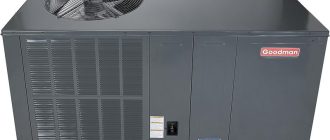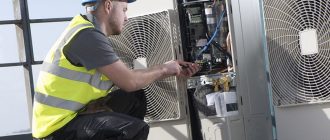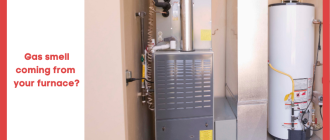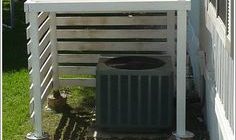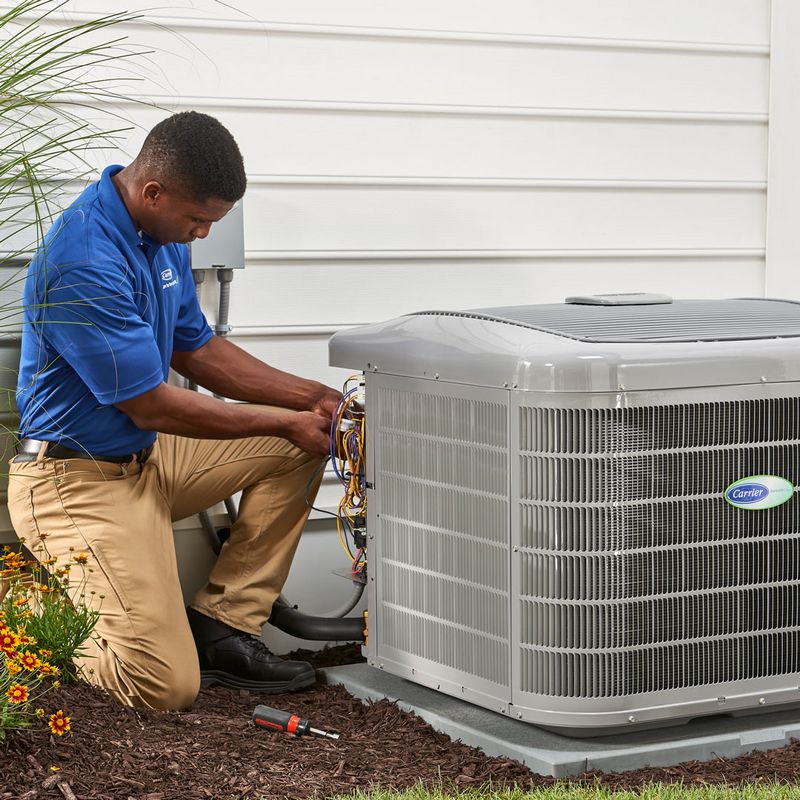
Why is replacing AC so expensive?
Replacing an AC system can be a significant expense for homeowners. It’s natural to wonder why such a necessary appliance comes with such a hefty price tag. In this article, we will explore the various factors that contribute to the high cost of replacing an AC unit.
1. Equipment and Installation
One of the primary reasons why AC replacement is expensive is the cost of the equipment itself. High-quality air conditioning systems can be quite pricey, especially if you opt for advanced features and energy-efficient models. Additionally, the installation process involves skilled labor, which comes at a cost. HVAC technicians need to properly install the AC unit to ensure optimal performance and efficiency.
2. Complexity of the System
AC systems are complex and require extensive knowledge to handle properly. The intricate design and components of the system add to the overall cost of replacing it. The complexity of the system also means that it requires specialized tools and equipment for installation, repair, and maintenance, which further drives up the expenses.
3. Regional Factors
The cost of replacing an AC unit can also vary depending on your location. Factors such as local competition, supply and demand dynamics, and regional labor costs can influence the overall price. Some areas may have a higher demand for HVAC services, resulting in higher prices. It’s essential to consider these regional factors when budgeting for AC replacement.
4. Additional Upgrades or Repairs
In some cases, AC replacement may involve additional repairs or upgrades to the existing system. This can further increase the overall cost. For example, if your ductwork needs repairs or modifications, you will need to factor in those expenses as well. It’s important to consult with a professional HVAC technician to assess your specific requirements and determine the full scope of the project.
In conclusion, the high cost of replacing an AC system can be attributed to several factors, including the price of equipment and installation, the complexity of the system, regional factors, and the need for additional upgrades or repairs. Understanding these cost factors can help homeowners plan and budget accordingly when it’s time to replace their AC unit.
Old and inefficient system
One of the main reasons why replacing an AC system can be expensive is because of the age and inefficiency of the existing system. Over time, AC systems can become outdated and less efficient, meaning they consume more energy to cool the same space. This inefficiency can result in higher electricity bills and decreased performance.
Additionally, older AC systems may require more frequent repairs and maintenance, which can add up over time. The cost of replacement parts for outdated systems can also be higher, as they may no longer be readily available or compatible with newer models.
Furthermore, advancements in technology have improved the efficiency and performance of newer AC systems. These newer models often come with features such as variable-speed motors, smart thermostats, and improved insulation, all of which contribute to energy savings and lower operating costs.
While investing in a new AC system may seem expensive upfront, the long-term cost savings from lower energy bills, reduced repairs, and increased efficiency can outweigh the initial expense. Additionally, newer AC systems often come with warranties, providing added peace of mind and potentially saving money on future repairs.
Increased demand for AC replacement
The increased demand for AC replacement has contributed to the expensive nature of the service. As more homeowners and businesses seek to replace their old, inefficient air conditioning units, the supply of skilled technicians and necessary equipment may not be able to keep up.
With the rising temperatures experienced in many parts of the world, especially during the summer months, the need for a properly functioning air conditioning system has become crucial. As a result, more people are opting to replace their outdated units with newer, more energy-efficient models.
However, this surge in demand can lead to longer wait times for AC replacement services and difficulty securing an appointment with a reputable HVAC company. The limited availability of qualified technicians can also drive up the costs of AC replacement due to the high demand for their services.
Moreover, manufacturers may struggle to meet the increased demand for AC units, causing supply chain issues and potential delays in obtaining replacement units. This can further drive up the cost of replacing the AC system due to limited availability and potential price increases.
Overall, the combination of high demand, limited supply of skilled technicians and AC units, and potential delays in obtaining replacement parts contributes to the overall expense of replacing an air conditioning system.
High labor costs
Replacing an AC unit involves skilled labor, which can contribute to the high costs associated with the process. HVAC technicians are trained professionals who need to install, repair, and maintain AC systems. Their expertise and experience come at a price.
Additionally, labor costs can vary depending on factors such as the complexity of the installation, the location of the AC unit, and the accessibility of the installation area. If the technician needs to remove and dispose of the old unit, this can also add to the overall labor costs.
In some cases, additional services may be required during the AC replacement process. For example, if there are any existing issues with the ductwork or electrical connections, these will need to be addressed before the new unit can be installed. This can increase the labor costs even further.
It’s important to remember that HVAC technicians often charge an hourly rate for their services, so the more time it takes to complete the AC replacement, the higher the labor costs will be.
In summary, high labor costs are a significant factor in the overall expense of replacing an AC unit. The expertise and skills required, as well as any additional services needed, contribute to the higher labor costs associated with this process.
Complex installation process
The process of replacing an AC system can be quite complex. It involves several steps that require specialized knowledge and tools. Here are some factors that contribute to the complexity of the installation process:
- Removal of the old AC unit: Before the new AC unit can be installed, the old unit needs to be properly removed. This can involve disconnecting electrical wiring, removing refrigerant, and uninstalling the components of the old system.
- Upgrading the electrical system: Depending on the specifications of the new AC unit, the electrical system of the building may need to be upgraded to handle the increased power requirements. This can involve installing new wiring, circuit breakers, and other electrical components.
- Ductwork modifications: In some cases, the existing ductwork may not be compatible with the new AC unit. This may require modifications, such as resizing ducts or adding new ducts to ensure proper airflow throughout the building.
- Installation of the new AC unit: Once the old unit has been removed and any necessary modifications have been made, the new AC unit can be installed. This involves connecting the electrical wiring, refrigerant lines, and ductwork, as well as securing the unit in place.
- Testing and adjustments: After the installation is complete, the AC system needs to be tested to ensure it is functioning properly. This may involve adjusting settings, checking for leaks, and verifying that the airflow is balanced throughout the building.
All of these steps require technical expertise and can be time-consuming. The complexity of the installation process contributes to the overall cost of replacing an AC system.
Availability of replacement parts
The availability of replacement parts is a significant factor that contributes to the overall expense of replacing an air conditioning (AC) unit. AC systems are complex and consist of various components, including compressors, motors, coils, and electronic controls.
Expensive AC units often require specialized replacement parts that are made specifically for that particular model or brand. These parts may need to be ordered directly from the manufacturer or a specialized supplier, which can incur additional costs. Moreover, if the AC unit is older or outdated, finding compatible replacement parts can be a challenge, as manufacturers may have discontinued production.
Another aspect to consider is the time required to obtain replacement parts. If the parts are not readily available, it can prolong the process of replacing the AC unit and increase costs associated with labor and temporary cooling solutions.
Therefore, the availability of replacement parts plays a crucial role in determining the overall expense of replacing an AC unit. When considering the cost factors, it is essential to account for the cost of specialized parts and the potential challenges and delays in obtaining them.
Energy-efficient options
When it comes to replacing an AC system, it is important to consider energy-efficient options. Although these options may initially seem more expensive, they can result in long-term cost savings.
Energy-efficient AC systems are designed to consume less electricity while providing the same level of cooling. This can significantly lower energy bills, especially during hot summer months when the AC is running constantly.
These systems often have higher upfront costs due to their advanced technology and energy-saving features. However, the savings in energy consumption can outweigh the initial investment over time.
Additionally, some energy-efficient AC systems qualify for tax credits or rebates from government or utility programs. These incentives can help offset the cost of replacing an AC system, making energy-efficient options more affordable.
Furthermore, energy-efficient AC systems are environmentally friendly, as they reduce greenhouse gas emissions and contribute to a greener planet. By choosing an energy-efficient option, you not only save money but also contribute to a sustainable future.
In conclusion, while energy-efficient options may be more expensive initially, they offer long-term cost savings, potential incentives, and environmental benefits. Considering these factors can help you make an informed decision when replacing your AC system.
Size of the AC unit
The size of the AC unit is a significant factor that contributes to the overall cost of replacement. AC units come in different sizes to accommodate various spaces. Installing an AC unit that is too small for the area it needs to cool would result in inefficient cooling and increased energy consumption. On the other hand, installing an AC unit that is too large can lead to short cycling, where the unit turns on and off frequently, causing unnecessary wear and tear.
When replacing an AC unit, it is essential to choose the right size based on the square footage of the space. HVAC professionals perform calculations to determine the correct size of the AC unit needed. This involves considering factors such as the square footage, insulation, number of windows, and orientation of the space.
The cost of the AC unit itself depends on its size. Generally, larger units are more expensive than smaller ones. Additionally, the installation cost can also increase for larger units, as they may require more extensive electrical work, duct modifications, or additional labor.
Additional features and upgrades
When replacing an AC system, there are several additional features and upgrades that can contribute to the overall expense. These features can enhance the performance, efficiency, and comfort provided by the new AC unit, but they also come with a price tag.
One common upgrade is a programmable thermostat. These thermostats allow homeowners to set specific temperature schedules throughout the day, helping to optimize energy usage and decrease energy bills. While a programmable thermostat can save money in the long run, it does add to the upfront cost of replacing an AC system.
Another popular feature is zoning. With zoning, multiple thermostats are installed throughout the house, allowing different areas to be cooled independently. This provides greater control over the comfort levels in each room and can lead to energy savings by avoiding unnecessary cooling of unused areas. However, the installation of zoning systems can significantly increase the cost of replacing an AC unit.
Improved air filtration is another upgrade that homeowners may opt for when replacing their AC system. Upgraded filters can help remove more allergens, dust, and pollutants from the indoor air, leading to better air quality. However, these enhanced filtration systems often come at a higher cost.
In addition, some homeowners may choose to invest in a variable-speed compressor. These compressors can adjust their speed based on the cooling needs of the house, providing more precise temperature control and increased energy efficiency. However, variable-speed compressors are typically more expensive than single-speed compressors.
Other features and upgrades, such as noise reduction technology, smart home integration, and extended warranties, can also contribute to the overall cost of replacing an AC system.
Location and accessibility
The cost of replacing an AC system can vary based on the location and accessibility of the property. If the property is in a remote or difficult-to-reach location, it can be more expensive to transport the new system and remove the old one.
In some cases, additional equipment or manpower may be required to move the necessary materials and tools to and from the property. This can increase the overall cost of the replacement process.
Additionally, the accessibility of the AC system within the property itself can also impact the cost. If the system is located in a confined space or requires specialized equipment to access, it may take more time and effort to replace it. This can result in higher labor costs.
Overall, location and accessibility factors can contribute to the expensive nature of replacing an AC system. Property owners should consider these factors when budgeting for a replacement and consult with professionals to get an accurate estimate.
Seasonal variations in pricing
One factor that can contribute to the expensive costs of replacing an AC system is the seasonal variations in pricing. AC companies often adjust their prices based on the demand for their services during certain times of the year.
During the hot summer months, when AC usage is at its highest, AC companies may charge higher prices for replacement services due to the increased demand. This is because many homeowners and businesses rely heavily on their AC systems to maintain comfortable indoor temperatures during this time.
Additionally, AC companies may have higher operational costs during peak seasons, such as increased employee wages, higher energy consumption, and a larger workload. These factors can translate to increased pricing for AC replacement services.
On the other hand, during the colder winter months, the demand for AC replacements is typically lower. As a result, AC companies may offer lower prices or discounts to attract customers during this off-peak season. Homeowners who are proactive and choose to replace their AC system during the winter months may be able to take advantage of these lower prices.
It is important for consumers to be aware of these seasonal variations in pricing when considering AC replacement. By understanding when demand is high and low, homeowners can potentially save money by scheduling their AC replacement during the off-peak seasons.
Quality of the chosen AC system
When it comes to replacing an AC system, the quality of the chosen system plays a significant role in determining the overall cost.
High-quality AC systems tend to be more expensive upfront. However, they offer various benefits that justify their higher cost in the long run.
Firstly, high-quality AC systems are often more energy-efficient, meaning they consume less electricity to cool your space. This results in lower energy bills, saving you money in the long term.
Moreover, these systems are typically more durable and have a longer lifespan. They are built with superior materials and undergo rigorous testing to ensure their reliability. As a result, they are less likely to break down or require frequent repairs, reducing maintenance costs.
Additionally, high-quality AC systems often come with advanced features, such as programmable thermostats or air purifiers, which can enhance your comfort and indoor air quality. While these features may add to the initial cost, they can provide significant benefits for your health and well-being.
When choosing an AC system, it is essential to consider your specific needs and budget. While a high-quality system may be more expensive upfront, it can result in long-term cost savings, increased comfort, and better indoor air quality. Investing in a quality AC system is a worthwhile expense that can pay off in the form of lower energy bills and fewer repairs.
Manufacturer warranties
When it comes to replacing an AC, one cost factor that can greatly impact the overall expense is the manufacturer warranty. Most air conditioning units come with a warranty that covers certain parts and labor for a specific period of time. The length and terms of the warranty can vary depending on the manufacturer and the specific model of the AC unit.
Having a manufacturer warranty can help reduce the cost of replacing an AC, as it can cover the expenses for repairs or replacements of faulty components during the warranty period. Without a warranty, any repair or replacement costs would need to be paid out-of-pocket by the homeowner.
It’s important to carefully review the terms and conditions of the manufacturer warranty before purchasing a new AC unit. Some warranties may have limitations or exclusions that could affect the coverage. For example, the warranty may only cover certain components or may not include labor costs. Additionally, the warranty may require regular maintenance or service to be performed by a licensed professional in order to remain valid.
While a manufacturer warranty can help offset some of the costs of replacing an AC, it’s essential to factor in the warranty coverage and terms when budgeting for a replacement. It’s also worth considering the reputation and reliability of the manufacturer when evaluating the value of the warranty. A reputable manufacturer with a history of providing reliable products and good customer service may offer a more comprehensive and reliable warranty.
| Can help reduce costs by covering repairs or replacements during the warranty period. | May have limitations or exclusions that could affect coverage. |
| May offer peace of mind and assurance of quality. | May require regular maintenance or service to remain valid. |
| Can provide a longer-term protection against unexpected expenses. | Not all manufacturers offer the same level of warranty coverage. |
In summary, manufacturer warranties can play a significant role in the cost of replacing an AC. It’s important to carefully review the warranty terms and consider the reputation of the manufacturer when making a decision. While a warranty can provide protection against unexpected expenses, it’s crucial to understand its limitations and requirements to ensure proper coverage.
Professional Installation Costs
One of the major reasons why replacing an AC system can be expensive is due to the professional installation costs involved. It is highly recommended to hire a licensed and experienced HVAC technician to install your new AC unit. While it may be tempting to try and save money by doing the installation yourself or hiring an unlicensed contractor, this can lead to costly issues down the line.
A professional HVAC technician has the knowledge and expertise to ensure that the AC unit is installed correctly and operates efficiently. They will also be able to properly connect the electrical components, refrigerant lines, and ventilation system. Any mistakes or improper installation can result in reduced energy efficiency, decreased performance, and potentially even safety hazards.
Additionally, professional installation often includes other services such as removing the old AC unit, disposing of hazardous materials, and providing warranty coverage. These additional services can contribute to the overall cost of replacing the AC system.
While professional installation costs may add to the initial expense of replacing an AC unit, it is a worthwhile investment to ensure proper functioning, energy efficiency, and longevity of the new system. Hiring a licensed professional can also provide peace of mind and protection against potential issues and expensive repairs in the future.
Q&A:
Why do air conditioning replacements cost so much?
There are several factors that contribute to the high cost of air conditioning replacements. First, the cost of the actual equipment itself is often quite expensive. Additionally, the installation process can be complex and time-consuming, requiring skilled labor. There may also be additional costs for removing and disposing of the old AC unit, as well as any necessary ductwork repairs or upgrades. Furthermore, the cost can vary depending on the size and type of the AC unit needed for the specific property.
Are there any ways to reduce the cost of replacing an air conditioner?
While air conditioning replacements can be costly, there are a few ways to potentially reduce the cost. First, it is recommended to obtain multiple quotes from different HVAC companies to compare prices and find the best deal. Additionally, some HVAC companies may offer financing options or payment plans to help spread out the cost over time. It is also important to properly maintain and service your air conditioner to prolong its lifespan and potentially avoid the need for a replacement in the near future.
What are some common factors that can affect the cost of replacing an air conditioner?
There are several common factors that can affect the cost of replacing an air conditioner. The size and type of the AC unit needed for the specific property can have a significant impact on the cost. Additionally, if there are any existing ductwork issues or repairs that need to be addressed, this can also add to the overall cost. The location and accessibility of the AC unit can also affect the labor costs associated with the installation process. Finally, the brand and quality of the equipment being installed can also impact the cost.
Is it worth it to invest in a more expensive air conditioning unit?
Investing in a more expensive air conditioning unit can often be worth it in the long run, as it can provide better energy efficiency and overall performance. While the upfront cost may be higher, a more expensive unit can potentially save money on energy bills over time. Additionally, higher-quality units typically come with longer warranties, providing added peace of mind. It is important to consider factors such as the size and needs of the property, as well as the long-term financial implications, when deciding whether to invest in a more expensive unit.

